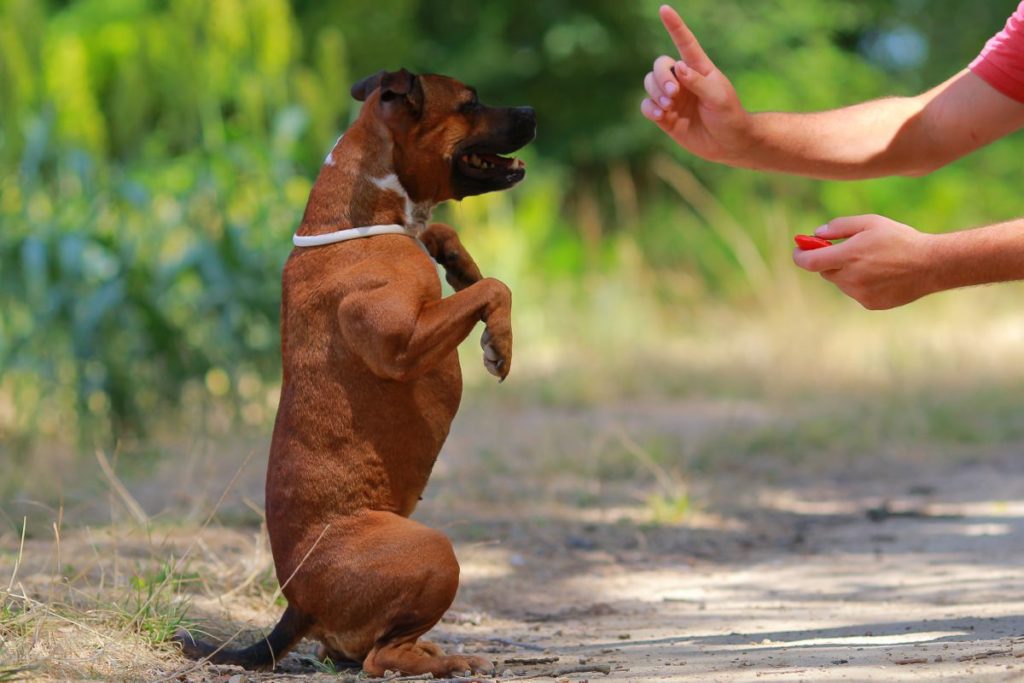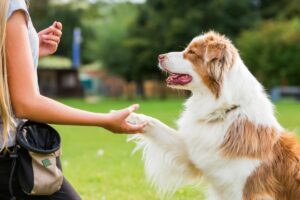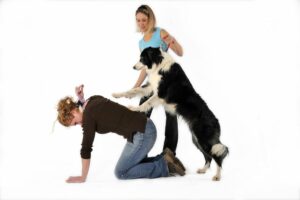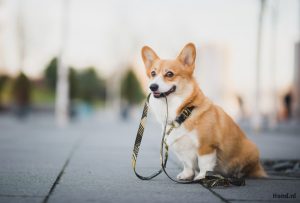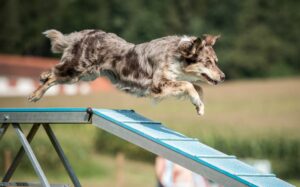One of the great and fun things to do with your dog is play and training. Teaching tricks is part of that. When you see other dogs with their owners doing all kinds of tricks and tricks, it all seems very simple. Yet it takes a lot of practice, repetition and patience to teach your four-legged friend all this. Are you just starting to practice tricks on your dog? Then sitting is a good start, because from here you can also teach him other tricks. In this article we will tell you how you can learn the trick ‘sitting nicely’ step by step.
Start with training beautiful sitting
Are you ready to start training the command beautiful sit? Then start with proper preparation. How will you reward your buddy for good behavior and responding well to your commands? Will you give him reward treats? Then make sure you have plenty of treats on hand. If you are used to doing clicker training with your dog, then your animal will know how this positive reward works for him.
Naturally, you can also reward with your voice. Say for example: ‘good dog’ or ‘good boy’. When you reward with your voice you will automatically speak a little higher and more friendly. Your animal feels very well that this is a positive way of paying attention to him.
Step 1: Find a good spot
With good preparation it is also important that you find the right place where you will do the training. Find a quiet place without distractions. For example, a spacious room where there is no clutter and where no other animals or people are present. This will create the most ideal conditions for concentrated training.
Step 2: Start training
Now the training really begins. We assume that your four-legged friend already knows the command ‘sit’. Have your dog sit, and then hold out a tasty treat. He may only sniff at it, and not eat it. Put your hand with the treat in it slightly upwards, so that your dog goes up with it. Is he so far up that one of his legs of the floor comes? Then give him a reward. The first step, the paw elevator, has been taken.
Step 3: Tiresome? Start again
Note: Does your dog stand up while you raise your hand? Then stop the exercise and start again from the beginning. So first sit again, and then move your hand up a little more slowly. Your dog’s nose must remain close to the treat. Is this exercise a little difficult? Stay patient and reward your animal generously. Even if he only lifts or moves his front leg a tiny bit.
Step 4: The double paw elevator
You can now move on to the next step: the double paw elevator. When your dog lifts a paw, you hold the treat just a little higher. Your buddy must then stretch his neck to reach the treat, and his other paw must also be off the floor in the process. As soon as the second leg is off the floor, give a reward. Do not wait too long, otherwise your dog will probably stand up or jump to get the treat.
Is this step difficult and does your animal keep coming up from a sitting position? Then try holding the treat a little more back. Reward immediately after your dog gives the correct response. Repeat these first two steps until your dog easily and quickly lifts both paws when you lift the treat in front of him.
Step 5: Lift the paws to the next level
Taking it a step further, it’s all allowed to be a little more dynamic. Until now, lifting the paws was enough to get a treat. The next step is to lift the paws higher. Repeat the first steps of the exercise but do not reward your buddy yet. Keep luring him upward until he shifts his weight slightly backward and the paws rise higher off the ground. Make sure your dog’s nose is close to the treat and keep him in the right position with it. If this is successful, then a reward is in order.
Step 6: Hold the position!
Is this exercise getting easier for your four-legged friend? Is he succeeding in shifting his weight and leaning back? Then you can now ask your dog to hold this position a little longer. You do this by waiting a little longer before giving the reward. Is a second too long to stay seated? Then take a step back and practice with a shorter time. Building up slowly is a prerequisite for tricks and tricks to be successful.
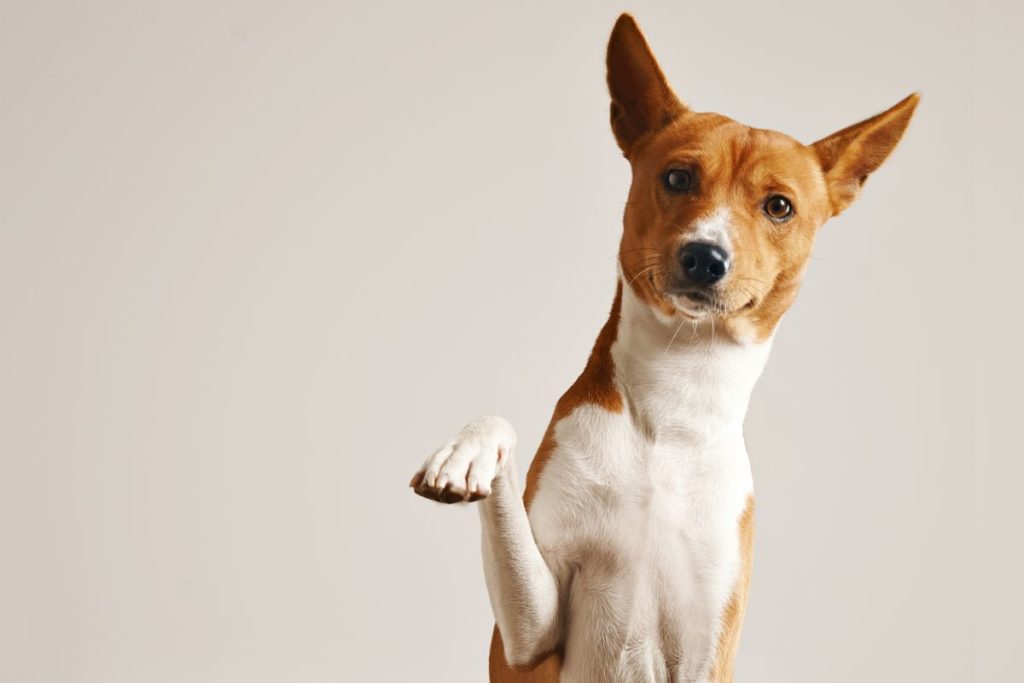
Step 7: Delete a reward
The final step you take with this exercise is to eliminate the treat. You are going to teach your animal to sit nicely with a verbal command. Teach him the command “beautiful sit” or “upright. You do this first in combination with rewarding by means of a nice treat. Your dog will understand better and better what you ask of him and the treat can be left out. Do you want to go a step further than you can also teach a hand gesture as a command.
Sitting nicely can be learned
The trick of sitting nicely is also called begging. And that’s because the way your dog sits at this trick looks a bit like begging. The first step is sitting on the hind legs, then your animal raises his front legs and keeps them nicely curled in front of his body. It looks cute when dogs demonstrate this trick. Learning this trick is easy when your dog already knows the command sit.
From there you practice further to beautiful sitting. It is also possible to teach your dog to point his paws to the air, for example. These postures are a bit like yoga for dogs. What is very important when teaching tricks to animals is that you do it step by step. Start practicing slowly, and when you notice that your buddy finds it a fun activity, you can expand. You will see that both of you will enjoy it.
About the advantages of trick training
Teaching your dog, the command ‘sit’ is in principle quite simple. Nevertheless, practicing this basic trick is very important for the whole training and education of your buddies. Teaching tricks and tricks, which is also called trick training, is one of the best ways to teach your animal obedience. In addition, it also makes fewer fun exercises easier.
But trick training definitely has more benefits:
It strengthens the bond between you and your buddy
Raising and training a dog is not an easy job. It takes time and effort to raise your pup. Frustration and disappointment do not only occur to you as an educator, also your animal does not always cooperate cheerfully. Especially when teaching complex skills or dealing with problem behavior, not everything goes the way you want it to. Trick training helps you with this.
When teaching a simple trick or trick it is usually not really important whether it works or not, fun is the main thing in trick training. If something doesn’t work out, just try something else. And just this light-heartedness in practicing ensures that the bond between you is strengthened. Afterwards you can work with new courage on more difficult points in parenting.
This way you also improve your own skills
By practicing tricks, not only does your dog learn something new. It also improves your own skills. The more often you practice tricks, the better you learn how to teach your buddy something new. Does your pup respond well to a reward treat, or does he prefer an extra cuddle? During practice, you will learn a lot from each other and about each other. Your own training skills will only improve.
You will learn to observe better and better, and because there is no pressure on you to practice, you can relax better and better during the training. All this will help you enormously in the education of your pup and the development of your own skills.
Development of your dog’s brain
Learning tricks and tricks requires mental effort from your buddy. Through the effort your dog makes, his brain develops. Dogs love challenges. Not just physically, but definitely mentally as well. It ensures that he is comfortable in his skin and will not get bored or develop negative behavior.
Better communication skills
As a final benefit we mention here the increase of communication skills. This means that you and your buddy will get along better during training. Your dog will understand your commands better and better and you will learn how to respond to your animal to achieve your goal. This positive development in communication with each other will also help you in your education, obedience training and daily life.
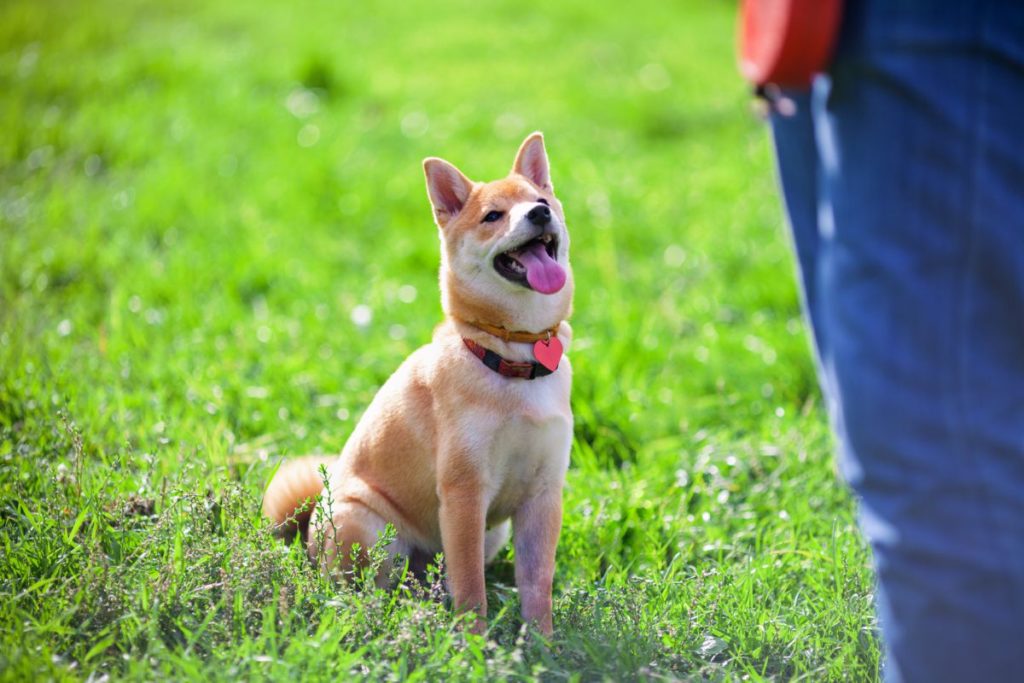
When will you teach your buddy to sit nicely?
Will you, after reading this article, immediately start teaching your dog to sit nicely? We hope that we have helped you on your way with the above tips. Were you successful or do you have additional ideas for other dog owners? We would love to hear from you, leave a comment in the comments?

